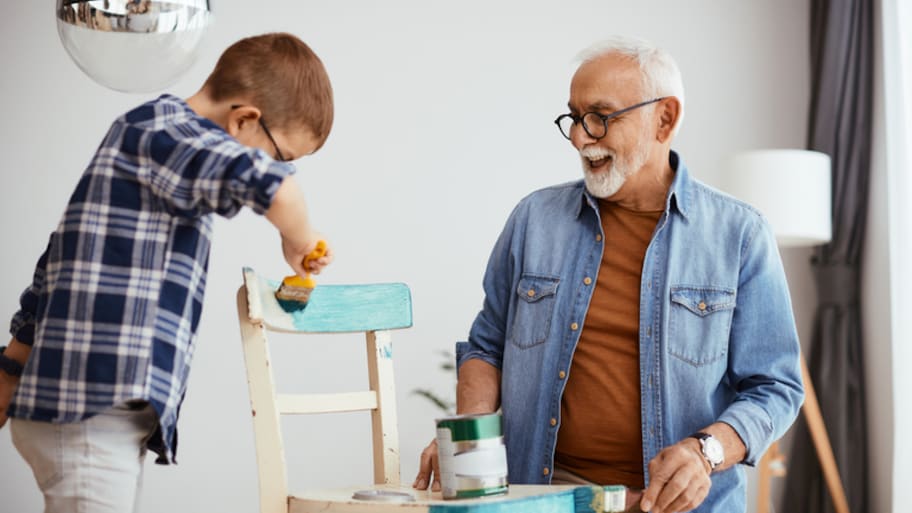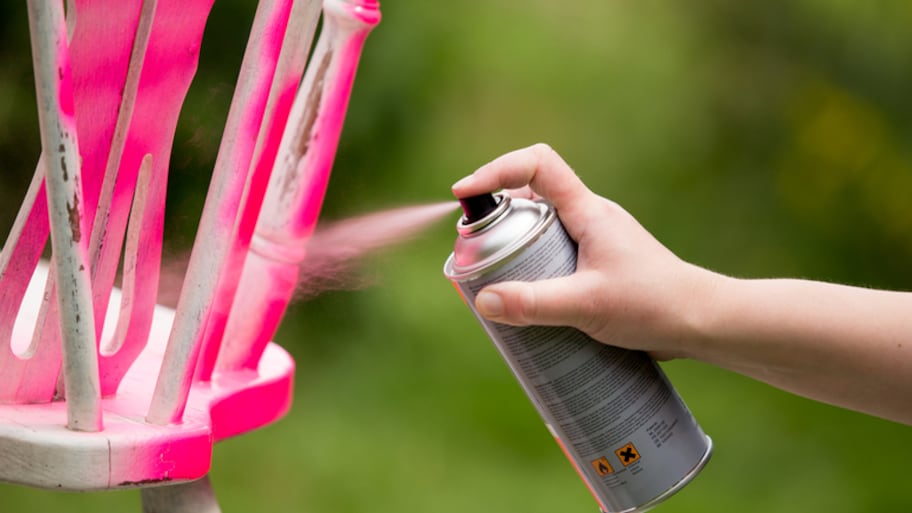These Are the Best Types of Paint for Outdoor Furniture
Not all paint can stand up to the elements, so finding the right one for your outdoor furniture is crucial


If your patio furniture is looking dingy and faded, it’s time to revive it. But you don’t always need to reupholster—sometimes you can bring it back to life with only a fresh coat of paint.
The best paint type to use for outdoor furniture depends on what the furniture is made from and the look you’re going for. Here are some to try.
1. Primer
Don’t get too eager—before you start painting, prep your surface. You’ll also want to decide between paint thinner and mineral spirits to thin your paint. If there are rough patches, sand them down with fine-grit sandpaper to eliminate the risk of splinters. Once your furniture is cleaned, apply a coat of primer, especially if you plan to use brush-on paint (as in, not spray paint).
Look for a primer that’s specific to the material you’re using. Metal furniture, for example, will need a specific rust-resistant primer. Also check to make sure the primer you use is suitable for outdoor use.
Plastic outdoor furniture won’t need much prep work. While their color is known to fade, the texture typically remains smooth and most plastic paint is formulated to stick to the material without primer. So you’ll only need to make sure the surface is clean and dry before getting to work.
2. Spray Paint

Conventional spray paint works well for wicker, wood, and metal outdoor furniture. It’s great for plastic, too, as long as the spray paint you use is specifically formulated for use on plastic.
Spray paint is easy to use and inexpensive, so using it to paint your patio furniture is an excellent beginner DIY project. It dries relatively quickly, too, so the project won’t take you weeks. In just a few hours, you can give your entire outdoor space a chic makeover.
Spray painting metal outdoor furniture works very well. First, you’ll need to use a wire brush to scrub down the piece, removing any flaking paint and rust. Sand it with an electric sander or fine-grit sandpaper to really get the gunk off. Then, you can wipe it down and get to painting.
Spray paints come in a wide variety of colors and finishes, so you’ll have plenty of options to choose from when you’re designing the patio of your dreams.
3. Outdoor Latex Paint
Exterior latex paint adheres to surfaces well and is resistant to mold and mildew. It’s also safe, as it doesn’t emit harmful chemicals when it dries. And it dries quickly, so applying two coats in one day (the standard if you want a long-lasting, solid color) is totally doable. Depending on how much you need to paint, your project could be done in a matter of hours.
Before latex paint was commonplace, experts advised DIYers not to paint in cold temperatures. With latex paint, that’s not a problem. Painting patio furniture in the winter? Go for it!
Latex paint is also eco-friendly and convenient to use. It’s a great choice for painting metal, wooden, and plastic patio sets.
4. Stain

If you like your outdoor furniture to look relatively natural, stick to wooden furniture and stain it, rather than paint it, when it fades or wears due to sun, rain, snow, and wind exposure.
If you’re staining the furniture a whole new color (maybe to match your deck?), you’ll need to strip the old stain and sand it before applying the fresh coat. If you’re applying a layer of the same color stain over top, you will get a darker color than you started with.
There are water-based stains and oil-based stains. Oil stains last longer because they actually penetrate deep into the wood grain, so you won’t have to reapply it as often as you would a water based finish. That said, water-based stains are better for soft woods such as cypress, cedar, and pine because they are breathable. Use oil-based stains for hardwoods that can handle a solid seal, such as teak.
5. Enamel Paint
While you can use enamel paints outdoors, you need to pay attention to what type you’re using, as not all enamel paints are weather-resistant. Most lacquer-based and oil-based enamel paints are suitable for outdoor use, but acrylic-based enamel paints won’t last long when exposed to the elements.
Enamel paints give a hard finish (say goodbye to messy brush strokes!) and they come in all kinds of colors. But enamel isn’t very flexible, so avoid using it to repaint wicker furniture because it will likely crack and chip off easily.
6. Oil Paint
For wicker and other flexible wood furniture, use an oil-based paint. These are flexible and tend not to peel or crack as they move.
Oil-based paints have been a standard for outdoor painting projects for hundreds of years. They stand up to the elements, cover more thoroughly with one coat, go on smoothly, and hold up to high-traffic areas.
However, the green-minded DIYer may refuse oil paints because of their relatively unsustainable ingredients. Many states have even banned their use because of their volatile organic compounds (VOCs) that can be harmful to human health when breathed in. But if you’re set on using oil paints, especially if you’re painting wicker furniture, look for low-VOC and no-VOC exterior oil-based paints at the store.
7. Exterior Acrylic Paint
DIYers love acrylic paints because of their vibrant colors and solid finish, but acrylics aren’t always suitable for painting outdoor furniture. Acrylic paint isn’t completely waterproof, so harsh weather can ruin your hard work.
But there’s no denying how great acrylics can turn out. If you’re dead set on using them for your project, make sure you purchase special exterior acrylic paints and consider applying a sealant afterwards to help it last longer. Use a brush-on or spray-on outdoor varnish to seal it.
